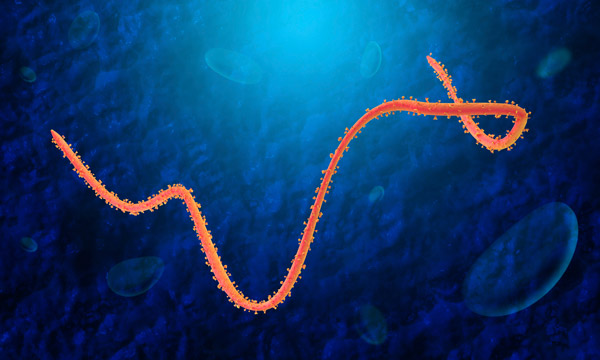
Ebola outbreak and shipping
Below information is received from Nigel Griffiths in his capacity as Director and Secretary of the International Maritime Health Association following the Director General of the WHO declaring that Ebola was a Public Health Emergency of International Concern (PHEIC) which is an increase in status of the disease.
The Ebola Outbreak and Shipping
WHO Director-General Dr. Tedros Adhanom Ghebreyesus declared on 17 July, 2019 that the Ebola virus disease (EVD) outbreak in the Democratic Republic of the Congo (DRC) is a Public Health Emergency of International Concern (PHEIC), reversing his previous position as declared on 14 June, 2019.
“It is time for the world to take notice and redouble our efforts. We need to work together in solidarity with the DRC to end this outbreak and build a better health system,” said Dr. Tedros. “Extraordinary work has been done for almost a year under the most difficult circumstances. We all owe it to these responders — coming from not just WHO but also government, partners and communities — to shoulder more of the burden.”
The declaration followed a meeting of the International Health Regulations Emergency Committee for EVD in the DRC. The Committee cited recent developments in the outbreak in making its recommendation, including the first confirmed case in Goma, a city of almost two million people on the border with Rwanda, and the gateway to the rest of DRC and the world.
 Ebola virus disease (EVD), caused by the Ebola virus is a severe and often fatal disease. Taking its name from the Ebola River, a tributary of the Congo River in the Democratic Republic of Congo, the virus was first identified by Professor Peter Piot at the Institute of Tropical Medicine in Antwerp in 1976. There have been more than twenty five known outbreaks of EVD since, and five strain of the virus identified in total.
Ebola virus disease (EVD), caused by the Ebola virus is a severe and often fatal disease. Taking its name from the Ebola River, a tributary of the Congo River in the Democratic Republic of Congo, the virus was first identified by Professor Peter Piot at the Institute of Tropical Medicine in Antwerp in 1976. There have been more than twenty five known outbreaks of EVD since, and five strain of the virus identified in total.
Transmission occurs as a result of direct contact with the bodily fluids of infected individuals, but is thought to originate from fruit bats and other non-human primates. Previous outbreaks have been centred on Central and West Africa, but this present outbreak has seen cases emerging in Uganda also. The current outbreak exceeded the 2000 marker on 6 June, 2019.
The previous outbreak was the largest to date, and was believed to have begun in Guinea in December 2013. Unlike previous outbreaks, which were centred on rural communities, infections were also detected in large urban areas in 2014. Proximity accelerated the speed of transmission and much larger numbers were diagnosed with the disease than in previous epidemics.
The healthcare system in Africa is fragile and underdeveloped. The shortage of healthcare professionals in Africa poses a serious challenge.
The battle against EVD is a battle of basic medical care in poorly developed healthcare systems with a lack of resources. Currently the lack of resources such as protective gloves and gowns, intravenous fluids and established protocol and guidelines place limited front line health workers who care for Ebola sufferers at risk.
Epidemics and their potential for spread should never be underestimated. When HIV was emerging in the early 1980s, we clearly underestimated the global effect that the disease would have, and that in only a few decades, tens of millions of people worldwide would become infected.
Transmission of EVD is by contact with the body fluids and secretions of those who are suffering from the disease, and remains present in the corpses of those who have died from EVD. There may be possibility to acquire the disease from the bedding of sufferers and the deceased, and through infected bush meat. The signs and symptoms include:
- Fever (greater than 38.6)
- Severe headache
- Muscle pain
- Weakness
- Diarrhoea
- Vomiting
- Abdominal pain
- Unexplained haemorrhange (bleeding or bruising)
Symptoms may appear anytime from 2 to 21 days after exposure to EBV, but the average is 8 to 10 days.
Vaccination R and D is in its infancy with no licensed vaccine presently, so the focus, especially in shipping should be on the prevention of infection. It is unlikely that the seafarer will be exposed to potential infection, but the International Chamber of Shipping’s press release probably forms a good preventative starting point:
1. The Master should ensure the crew are aware of the risks, how the virus can spread and how
to reduce the risk.
2. The ISPS requirements on ensuring that unauthorized personnel do not board the vessel should be strictly enforced throughout the duration of the vessel being in port.
3. The Master should give careful consideration to granting any shore leave whilst in infected ports.
4. The ship owner should avoid making any crew changes in the ports of an affected country.
5. After departure the crew should be aware of symptoms and report any occurring symptoms immediately to the person in charge of medical care.
Practical steps to minimize the possible transmission include:
- Prevent seafarers coming into contact with anyone who may carry the virus by restricting shore leave and access to the vessel.
- Ensure senior officers are familiar with the disease and modes of transmission, and any quarantine orders that may be in places in infected countries.
- Avoid hand shaking and minimize bodily contact with local personnel in endemic areas. Use of effective hand sanitizers are to be encouraged, especially when in port.
- All shore leave should be cancelled.
- Crew changes should be avoided in all affected countries.
- If a crew member requires medical or dental attention, other than for EVD, it should be considered whether it is safe for them to remain on the ship until the next port of call and to seek medical attention there.
- Bushmeat could be dangerous and should be avoided.
The International Convention for the Safety of Life at Sea (SOLAS) and the ISPS Code provide a framework for establishing preventative measures against security incidents affecting ships in port. Whilst it is clear that special measures to enhance maritime security were not devised with containment of infectious diseases in mind, it is also clear that the diligent application of controls and other security measures in port and on board may serve to support provisions aimed at preventing the spread of EVD. Procedures related to security and access to the vessel should be revised and vigilance heightened.
Stowaways will pose additional risk to the ship owner, and security searches prior to departure should be increased. Any stowaway from an infected country can pose a risk to the crew, and are certain to be difficult to disembark at a later stage if their health status is uncertain as they will be seen as a potential public health threat. The prevention of stowaways is integral to the public health security of the ship.
Brincidofovir, an antiviral drug, has been granted an emergency FDA approval as an investigational new drug for the treatment of Ebola after it was found to be effective against Ebola virus in in vitro tests.
Concluding, whilst risks are present in ports of countries in which EVD is known to exist the risk to seafarers is not particularly high if the necessary precautions are in place to secure the vessel and to minimize exposure potential. All quarantine instructions are to be followed and any operating procedures put in place by the ship owner to minimize spread. The Club remains at your disposal to answer any questions related to EVD.
The Ebola Outbreak and Shipping»
Member Alert is published by The Swedish Club as a service to members. While the information is believed correct, the Club cannot assume responsibility for completeness or accuracy.
Member Alert is published by The Swedish Club as a service to members. While the information is believed correct, the Club cannot assume responsibility for completeness or accuracy.